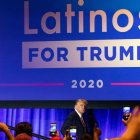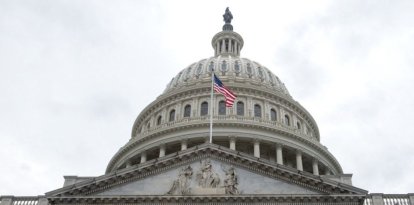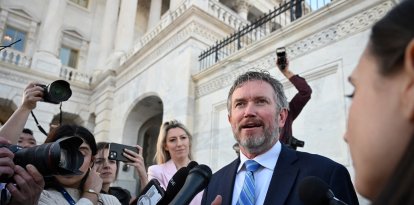Hispanic vote definitely contributed to Trump's landslide victory
The president-elect won a historic 46% backing from Latino voters, the highest for a Republican since records have been kept.

Latinos at a Donald Trump rally
On Tuesday, Hispanic voters clearly showed that they have definitively broken free of the chains that traditionally held their vote captive to the Democratic Party. Donald Trump will return to the White House in January, after winning an election in which the participation of Latinos was decisive and confirmed that this community's rapprochement with the GOP is not a mirage.
Overall, 52% of Hispanic voters indicated that their ballot went to Democratic candidate Kamala Harris, while 46% leaned toward Trump. This represents a growth of 14 percentage points for the Republicans with respect to the results of four years ago. The data corresponds to an exit poll conducted by Edison Research and published by media outlets that make up the National Election Pool.
The numbers are similar to those published by other surveys conducted by various media outlets. For example, another poll reported by the AP and Fox News showed that Harris got the support of 56% of Hispanics, while Trump got 42%. Harris' performance among Hispanics is the worst by a Democrat since John Kerry in 2004, Axios recalls.
Latinos' historic support for Trump in this election is the highest for a Republican presidential candidate in exit polls since the 1970s, Reuters explains. It even surpasses the 44% obtained by Republican George W. Bush in 2004. Ronald Reagan, for example, considered one of the best conservative presidents in history, only garnered 37% of the vote of this group in 1980 and 34% in 1984.
The result confirms the trend, which began with Trump's first term in office, in which Latino voters began to move closer to the Republican Party. Despite being defeated by Joe Biden in 2020, the numbers among Hispanics improved again for conservatives, reaching the record registered in this election.
Much of the improvement among Hispanics is due to male voters. According to CNN, Trump won among males with 55% of ballots cast, up 18 points from the last presidential election. His support among women in the community was 38%, 8 points above his result among them in 2020. Kamala Harris won majority support among Hispanic women (60%), but fell far behind the former president among male voters (43%).

The Hispanic vote definitely contributed to Trump's landslide victory
Hispanics overwhelmingly backed Trump in key states
In addition, the support of Hispanics for the Republican was key in some critical territories to win the election. For example, in Michigan, one of the key battleground states, Trump won 58% of Latino support to Harris' 39%.
The data is very similar to that of Florida, where 58% of Hispanics said they supported Donald Trump, compared to 40% who opted for Harris. In the case of Texas, the Republican candidate's success among Latinos was almost as resounding: 55% backed him versus 44% who backed the Democrat. In Ohio, 49% of the community's voters backed Trump, while 47% decided to vote for the vice president.
One of the keys to Harris' defeat was the loss of the Hispanic vote in Michigan. According to Spanish news agency EFE, the Democratic candidate lost some 24 points among Latinos in The Great Lakes State, plummeting to 35-39% support. Also decisive was the exodus of Hispanic voters in Pennsylvania, where voters abandoned the Democratic Party by 12 percentage points compared to Biden in 2020, dropping Harris' support to 57%.
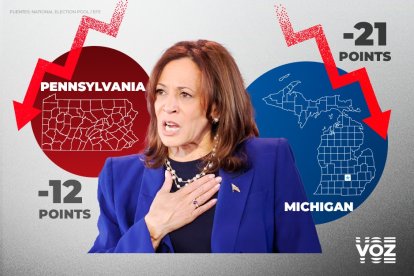
Kamala Harris fell in votes in key states
In addition, in other swing states such as North Carolina and Nevada, "roughly half of Hispanic voters backed Harris, while half backed Trump. In both states, Biden did better among Hispanic voters in 2020. In Georgia, fewer than 6 in 10 Hispanic supporters backed Harris, which is a slight underperformance from Biden’s 2020 margin," noted The Washington Post.
Trump's triumph among Hispanics was also reflected in counties nationwide. For example, the president-elect won a historic victory in Texas' Starr County, which borders Mexico, with a 97% Hispanic population, ending a streak of voting overwhelmingly in favor of Democratic candidates that began in 1896. "Trump won by 16 percentage points in the most Latino county in the U.S. — more than 97% of residents are Hispanic — marking the first time since 1892 that a Republican presidential candidate took a majority," highlighted Bloomberg.
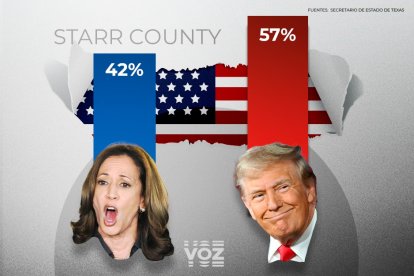
Trump won a historic vote in StarrVoz County.
Another example of Trump's rise among Hispanics is seen in the outcome of the polls in Florida's iconic Miami-Dade County. The mogul became the first Republican presidential candidate to win since 1988 in a seat where the former president himself was defeated by Hillary Clinton by 30 percentage points in 2016.
A very Christian community
Faith, so important among Hispanics, also proved decisive for Trump's victory. The slights of Kamala Harris and other prominent Democratic leaders to Christians, such as her absence at the Al Smith Dinner, coupled with the persecution against the faithful by the most anti-Christian administration in history, led Latino believers to turn their backs on the vice president. CNN indicated that 63% of Protestants and other Christian denominations and 58% of Catholics strongly rejected the Democrat.
The Democrat was only successful among Hispanics who were areligious. Seventy-one percent of this group voted for her, while only 26% voted for Trump. The trend does not seem shocking because the Democrat was a candidate who showed herself as not interested in faith throughout her campaign.
The economy, one of the biggest concerns for the community according to all the polls conducted during the Biden-Harris term, also weighed significantly in the direction of Hispanic voters. The majority of Latinos confirmed this at the ballot box by considering that the economic situation of the country is not good. Seventy percent of those who expressed this opinion preferred Trump in the presidential race, compared to 28% who opted for Harris. Among those who rated the economic situation as "good" (31%), 91% said they supported the Democrat.
The economic position of Hispanic voters was not a determining factor in this community's support for the Republican. In fact, both those who earned less than $50,000 a year and those who earn $100,000 or more a year agreed in supporting Donald Trump with 55% and 56% respectively.
Similarly, nearly half of young Hispanics in the 18-24 age group trusted the Republican with 47%, versus 48% who voted for Harris. The largest age group of Hispanics who went for Trump was voters aged 50-64 (it also includes the largest number of people), with 52% of the vote.
As for the educational level of Hispanics, 54% of Latinos with a college degree supported Kamala Harris. In contrast, Trump received 51% support from Hispanic voters who said they had never attended college.
In addition, a majority of Hispanic voters (34%) stressed that the most important quality a candidate should have was his or her ability to bring change to the country, and 69% felt that Trump was best suited to do so.




